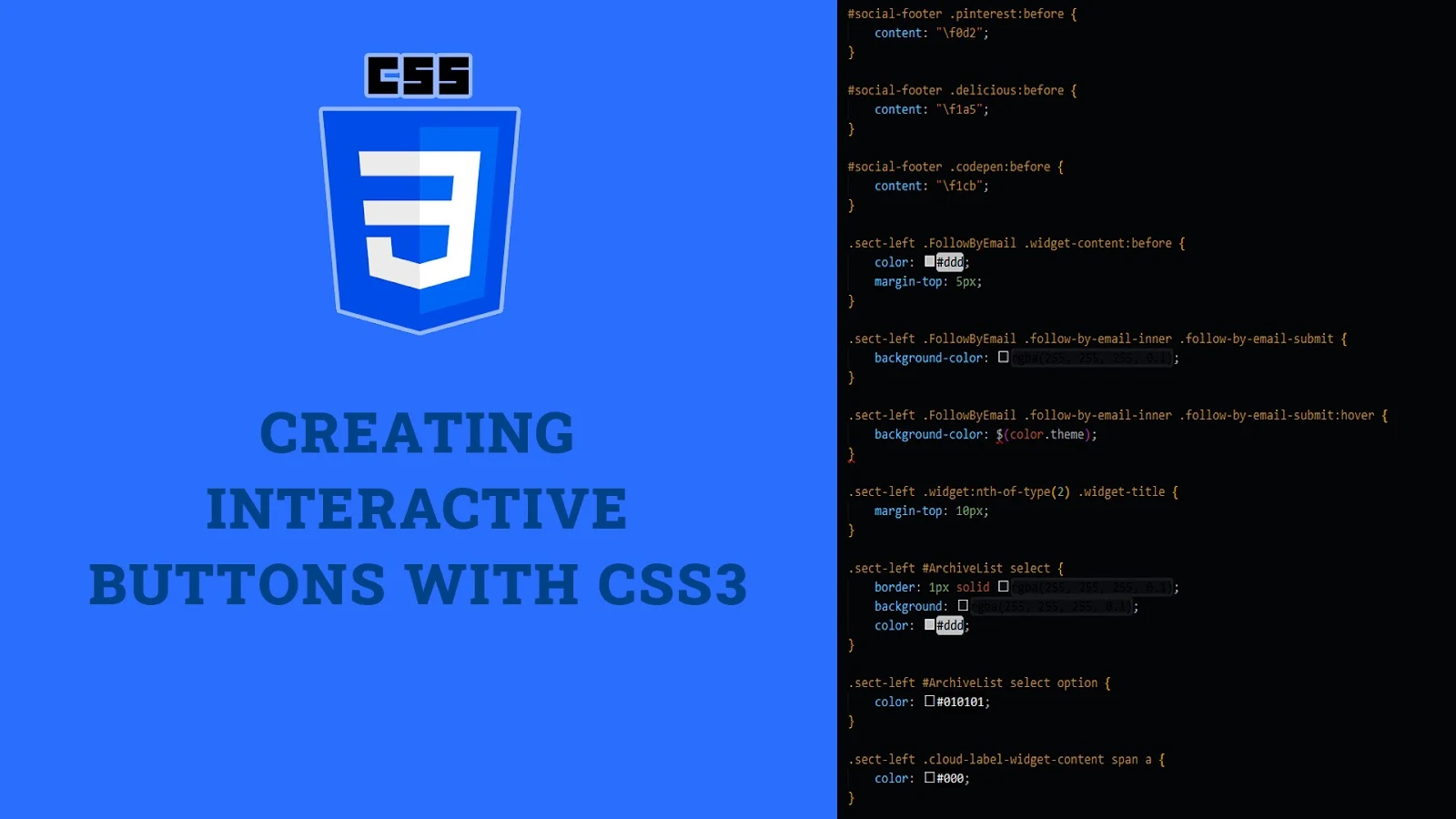CSS3 offers a plethora of properties and techniques for creating interactive buttons that enhance user experience and provide visual feedback. From hover effects to animations, CSS3 allows developers to craft buttons that not only look appealing but also respond to user actions. This article will explore various CSS3 techniques for creating interactive buttons, provide practical examples, and demonstrate how to use these techniques effectively.
Basic Button Styling
Before diving into interactive effects, it's essential to understand how to style buttons with basic CSS properties. This sets a strong foundation for adding interactivity later.
Example:
<button class="basic-button">Click Me</button>.basic-button {
background-color: #3498db;
color: #fff;
border: none;
padding: 10px 20px;
font-size: 16px;
border-radius: 5px;
cursor: pointer;
transition: background-color 0.3s ease;
}Hover Effects
Hover effects provide visual feedback when users interact with buttons. CSS3 transitions can be used to create smooth hover animations.
Example:
<button class="hover-button">Hover Me</button>.hover-button {
background-color: #3498db;
color: #fff;
border: none;
padding: 10px 20px;
font-size: 16px;
border-radius: 5px;
cursor: pointer;
transition: background-color 0.3s ease;
}
.hover-button:hover {
background-color: #2980b9;
}Active State Styling
The active state provides feedback when the button is being clicked. This can be styled using the :active pseudo-class.
Example:
<button class="active-button">Active Me</button>.active-button {
background-color: #3498db;
color: #fff;
border: none;
padding: 10px 20px;
font-size: 16px;
border-radius: 5px;
cursor: pointer;
transition: background-color 0.3s ease;
}
.active-button:active {
background-color: #1c6691;
}Animated Button Effects
CSS3 animations allow for more complex effects. These can be applied to buttons to create engaging interactions.
Example:
<button class="animated-button">Animate Me</button>.animated-button {
background-color: #3498db;
color: #fff;
border: none;
padding: 10px 20px;
font-size: 16px;
border-radius: 5px;
cursor: pointer;
animation: pulse 1.5s infinite;
}
@keyframes pulse {
0% {
box-shadow: 0 0 0 0 rgba(52, 152, 219, 0.4);
}
70% {
box-shadow: 0 0 0 10px rgba(52, 152, 219, 0);
}
100% {
box-shadow: 0 0 0 0 rgba(52, 152, 219, 0);
}
}Complex Button Effects
Combining multiple CSS3 properties can create intricate button effects that enhance the overall design and interactivity of a website.
Example:
<button class="complex-button">Complex Effect</button>.complex-button {
background-color: #3498db;
color: #fff;
border: none;
padding: 10px 20px;
font-size: 16px;
border-radius: 5px;
cursor: pointer;
position: relative;
overflow: hidden;
z-index: 1;
transition: color 0.4s ease;
}
.complex-button::before {
content: '';
position: absolute;
top: 50%;
left: 50%;
width: 300%;
height: 300%;
background-color: #2980b9;
transition: all 0.4s ease;
border-radius: 50%;
z-index: 0;
transform: translate(-50%, -50%) scale(0);
}
.complex-button:hover::before {
transform: translate(-50%, -50%) scale(1);
}
.complex-button:hover {
color: #fff;
}Fun Facts and Little-Known Insights
- Fun Fact: Interactive buttons enhance user engagement by providing immediate feedback based on user actions, making the web experience more dynamic and enjoyable.
- Insight: Combining multiple CSS3 properties such as transitions, animations, and transformations allows for the creation of sophisticated and visually appealing button effects.
- Secret: The use of CSS pseudo-elements like
::beforeand::aftercan add extra layers of styling to buttons without requiring additional HTML markup. - Trivia: Hover effects are not just for aesthetics; they can also improve accessibility by indicating clickable areas and enhancing the user experience.
- Hidden Gem: CSS3 provides a vast array of properties that can be combined creatively to produce unique button effects, enabling developers to craft customized user interfaces.
Conclusion
CSS3 offers powerful tools for creating interactive buttons that enhance user engagement and provide visual feedback. By utilizing techniques such as hover effects, active state styling, animations, and complex effects, developers can craft buttons that not only look appealing but also respond dynamically to user actions. Embrace the capabilities of CSS3 to elevate your web design and create interactive buttons that captivate your audience.
 Reviewed by Curious Explorer
on
Sunday, December 08, 2024
Rating:
Reviewed by Curious Explorer
on
Sunday, December 08, 2024
Rating:




No comments: